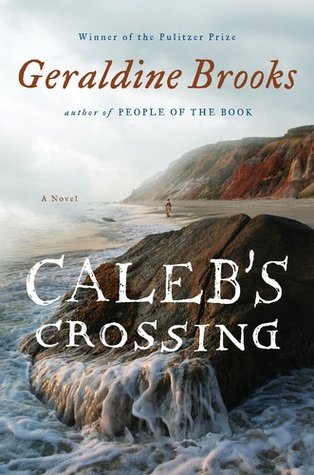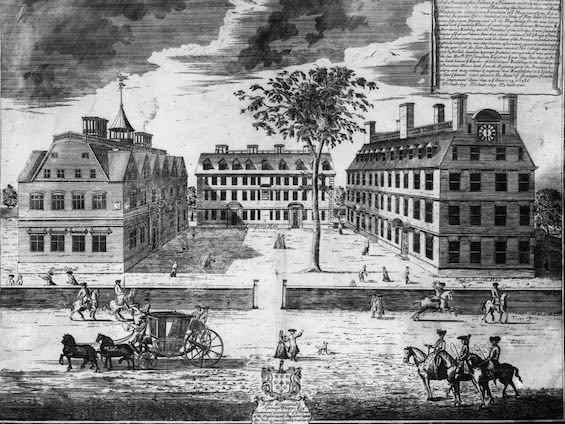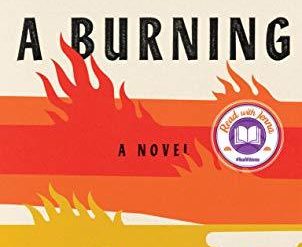
The year was 1660, the place an island now called Martha’s Vineyard. The “college at Newtowne” was a theological seminary located across the bay. Much later named Harvard University, the college was twenty-four years old and sported a student body of thirty-three young men. The following year a brilliant young Native American, Caleb Cheeshahteaumauk, matriculated as a student there. This brilliant historical novel tells the tale of Caleb’s “crossing” from his life as a chieftain’s son in the untamed expanse of what was then simply called “the island,” to the ranks of the educated elite in the Massachusetts Bay Colony. He became Harvard’s first Native American graduate. As Geraldine Brooks writes in Caleb’s Crossing, “He stood shoulder to shoulder with the most learned of his day, ready to take his place with them as a man of affairs.”
Estimated reading time: 5 minutes
Caleb’s story is told through the eyes of Bethia Mayfield, the young daughter of the preacher on the island and granddaughter of the breakaway colony’s founder. At the age of 12, she and Caleb meet on one of her rebellious wanderings across the island. They become fast friends over time.
Bethia is entirely a construct of Geraldine Brooks’ fertile imagination. She contrives to put the young woman in position to observe Caleb’s transformation almost constantly. However, virtually all the other characters in this novel are based on historical figures. Some of them loosely so (as is the case of Bethia’s family), some of them, including Caleb himself, hewing accurately to the known facts.
Caleb’s Crossing by Geraldine Brooks (2011) 354 pages ★★★★★

An indelible picture of early colonial life
Caleb’s Crossing is history told as it should always be: vivid, engrossing, and emotionally honest. In relating Caleb’s story, Brooks paints an indelible picture of the early decades of colonial life in Eastern Massachusetts. She casts a bright light on the troubled, and eventually tragic, relationship between the colonists and the Indians, and explores an aspect of that history much less commonly discussed: the rebellion of so many colonists against the rigid, narrow-minded regime of the Massachusetts Bay Colony.
This was the fourth of Geraldine Brooks’ extraordinary historical novels. Unlike so many other writers in that genre, she has no favorite period, no fixation on a narrow subject. Instead, she ranges through the centuries and across the globe to find the most arresting topics. And arresting they are! Every one of her earlier novels—Year of Wonders: A Novel of the Plague (2002), March (2006), and People of the Book (2008)—is both an adventure and a revelation to read. Brooks, an Australian-born former foreign correspondent for The Wall Street Journal, has a preternatural ability to relocate herself to an earlier time and an unknown place.
Harvard University’s earliest days
John Harvard, the College’s future namesake and first benefactor, was baptized at St. Saviour’s Church in London in 1607. That was thirteen years before the Pilgrims landed and founded Massachusetts Bay Colony. Harvard received his M.A. from Cambridge University, England, in 1635. The following year the “Great and General Court of the Governor and Company of the Massachusetts Bay in New England” approved £400 for the establishment of “a schoale or colledge” later to be called “Harvard.” It was the first college in the American colonies. And in 1637, the year before Caleb entered the school, the Great and General Court ordered the “colledge” to be located at Newetowne (renamed “Cambrige” in 1638). That year John Harvard willed his library (400 books) and half his estate to the College, becoming the first benefactor of his namesake institution.
Harvard College’s first class graduated in 1642, with degrees conferred on nine young men. Caleb Cheeshahteaumuck—estimated to have lived from 1644 to 1666—received his degree in 1665, becoming Harvard’s first Native American graduate. Tragically, he died in Cambridge the following year of what was then called “consumption,” possibly tuberculosis.
About the author

On her author website, Geraldine Brooks describes herself as “an author and journalist who grew up in the Western suburbs of Sydney, attending Bethlehem College Ashfield and the University of Sydney. She worked as a reporter for The Sydney Morning Herald for three years as a feature writer with a special interest in environmental issues. . .
“In 1982 she won the Greg Shackleton Australian News Correspondents scholarship to the journalism master’s program at Columbia University in New York City. Later she worked forThe Wall Street Journal, where she covered crises in the the Middle East, Africa, and the Balkans. In 1990, with her husband Tony Horwitz, she won the Overseas Press Club Award for best coverage of the Gulf War. . . She was awarded the Pulitzer Prize in fiction in 2006 for her novel March.
“Brooks married fellow journalist and author Tony Horwitz in Tourette-sur-Loup France in 1984. They were together until his sudden death in 2019. They had two sons, Nathaniel and Bizu, She now lives with a dog named Bear and a mare named Valentine by an old mill pond on Martha’s Vineyard and spends as much time as she can in Australia.”
For related reading
All of the author’s books can be found at The outstanding historical fiction of Geraldine Brooks.
If you enjoy reading history in fictional form, check out 20 most enlightening historical novels. And if you’re looking for exciting historical novels, check out Top 10 historical mysteries and thrillers.
You might also be interested in Top 10 great popular novels.
And you can always find my most popular reviews, and the most recent ones, on the Home Page.


























